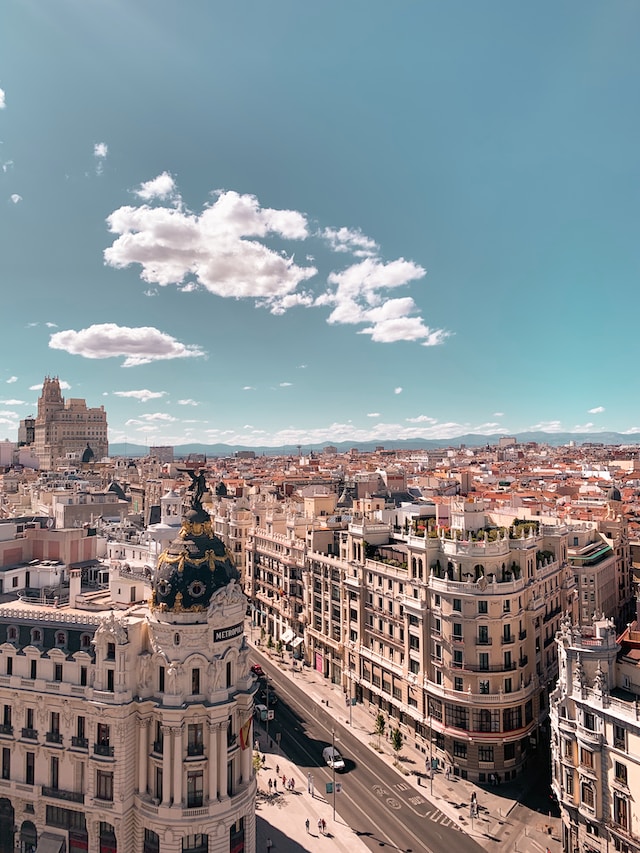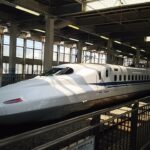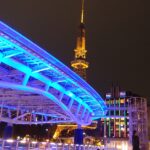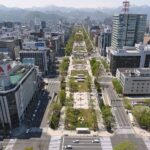The public transportation in Madrid is, on the whole, dependable and efficient. It includes trams, funiculars, and funicular rail in addition to buses, the metro, and suburban rail. With 13 lines and approximately 270 stops, the Madrid Metro is the most well-known and frequently used form of public transit in the city. Some of the trains provide both air conditioning and free Wi-Fi connectivity, although not all of them do. There are a number of different bus companies that operate routes that cover the entirety of the city. The suburban rail system known as Cercanas allows for brisk travel to the surrounding cities as well as the suburbs. In addition, there are tram lines and funicular lines, both of which give speedy service to popular neighborhoods and locations of tourist interest.
Metro system in Madrid – Basic information
The Metro in Madrid is widely recognized as one of the most advanced and user-friendly systems of its kind in the world. It provides service to a population of over 6 million people across more than 290 kilometers of track and connects all parts of the city. It has about 270 stations and several lines that connect each of them, and it runs using a combination of lines that are underground, overground, and on the surface of the ground. The metro is open daily beginning at 6 in the morning and staying open until 1:30 in the morning, with extended hours on the weekends and holidays. The price of a ticket for a single ride is 1.50 euros, and the price of a ticket for 10 rides is 12.20 euros. This makes it one of the least expensive methods to go around the city. With an average wait time of fewer than five minutes between trains, the Metro in Madrid is an extremely dependable and effective method of transportation across the city.
The lines of the Madrid subway system
The system consists of six lines which are served by one hundred and sixty nine stations. All system signage is displayed in both Castellano (Spanish) and Catalan.
Line 1 (Pinar de Chamartín to Valdecarros)
Line 1 of the Madrid Metro is an underground metro line that runs from Pinar de Chamartn in the north to Valdecarros in the southeast, via Sol. Valdecarros is located in northwest of Madrid. It now encompasses a total distance of 24 kilometers (14.9 miles) and boasts 33 stations, which is greater than any other line on the Madrid Metro. The line was the very first to be constructed within the Madrid Metro and was also the very first metro line to be constructed anywhere in Spain. It originally consisted of only eight stops and connected the Cuatro Caminos station in the north to the Puerta del Sol station in the city center. The first line of the Madrid Metro was officially opened to the public on October 31, 1919, 14 days after it first opened for business on October 17, 1919, when Line 1 was inaugurated. Since it was opened, the line has undergone a number of different extensions, the most recent of which was to Pinar de Chamartin in the north on April 11, 2007, and Valdecarros in the south on May 16, 2007. Both of these additions were completed in 2007. With around 7.5 million monthly riders, Line 1 is the second busiest line on the Madrid Metro, behind only Line 6. Line 6 is the busiest line.
Line 2 (Las Rosas to Cuatro Caminos)
The route 2 of the Metro in Madrid is a rapid transit route in the city of Madrid. It was inaugurated on June 11th, 1924, and its initial service was provided between the Sol and Ventas stations.
Line 3 (Villaverde Alto to Moncloa)
Within Madrid, the Madrid Metro consists of Line 3, which is a rapid transit line. There are 18 stations spread out across a distance of 16.424 kilometers (10.205 miles).
Line 4 (Argüelles to Pinar de Chamartín)
The Madrid Metro Line 4 is a rapid transit line with 23 stops. It is part of the Madrid Metro. The line was first launched for service in 1944 and has since undergone numerous extensions. As a result, it is today considered to be one of the busiest lines in the Madrid system.
Line 5 (Alameda de Osuna to Casa de Campo)
Since June 5, 1968, the line 5 of the Madrid Metro system has functioned as a rapid transit route. It is the fourth most utilized line in the Madrid system and carries 64 million people each and every year. It is 27 kilometers long. At the Aluche station, which is located on Line 5, you’ll find the Madrid Metro’s one and only elevated ground platform. Additionally, Aluche is the only station in the city where the metro runs above the Cercanas commuter train, which normally operates above ground.
Line 6 – CIRCULAR (Laguna to Lucero)
In 1979, the Cuatro Caminos and Pacifico stations on Line 6 of the Madrid Metro were the first to open for service. This is one of Madrid’s two circular lines, but in contrast to Line 12, it did not initially begin service as a complete loop. 1995 was the year that saw the completion of the circle, which had first opened in four sections. It has 23.5 kilometers in total length.
Line 7 (Hospital del Henares to Pitis)
The seventh rapid transit line in the Madrid Metro system was inaugurated on July 17, 1974 when it first opened for service. At this time, service is provided between Hospital del Henares and Pitis.
Line 8 (Nuevos Ministerios to Aeropuerto T-4)
On June 24, 1998, the Mar de Cristal station and the Campo de las Naciones (now Feria de Madrid) station were both opened as part of Line 8 of the Madrid Metro. 1999 saw the opening of an extension that went to Barajas by way of Madrid Airport, while the year 2002 saw the opening of an extension that went to Nuevos Ministerios and Colombia. This line was a line for small rolling stock when it first opened, but in 2002 it was converted into a line for huge rolling stock. The line utilizes extended versions of class 8000 trains that have four cars. Pinar del Rey, an intermediate station between Colombia and Mar de Cristal, opened its doors in 2007, the same year that an addition to the brand new Terminal 4 of Madrid Airport also opened its doors. Between the 26th of January and the 12th of April 2017, the line was out of commission for refurbishment.
Line 9 (Paco de Lucía to Arganda del Rey)
Line 9 of the Madrid Metro is a rapid transit line in Madrid that was initially opened on January 31, 1980, between Sainz de Baranda and Pavones. The line serves the area between these two stations. Later, on June 3, 1983, it was expanded from Avenida de América to Herrera Oria; nevertheless, this piece was at the time distinct from the original half until the missing fragment from Avenida de América to Sainz de Baranda was opened on February 24, 1986. Later, on June 3, 1983, the original component was extended from Avenida de América to Sainz de Baranda.
Line 10 (Hospital Infanta Sofía TO Puerta del Sur)
Line 10 of the Madrid Metro is a rapid transit line in Madrid that was really created by combining two lines that were formerly operating independently of one another. Today, the journey begins at Hospital Infanta Sofia in San Sebastián de los Reyes and concludes at Puerta del Sur in Alcorcón. At Tres Olivos, passengers are required to switch between the “line 10A” segment, which serves the section of the route to the south of the station, and the “line 10B” segment, which serves the portion of the route to the north and continues on to Hospital Infanta Sofa. The Begoa station on Line 10 gives access to the Cuatro Torres Business Area, while the Nuevos Ministerios station on Line 10 provides access to the AZCA. Additionally, the Chamartin Railway station, Plaza de Castilla, Plaza de Espaa, Principe Po, and Casa de Campo are also accessible through this line. The route connects the municipalities of Alcobendas and San Sebastián de los Reyes to the capital city of Madrid.
Line 11 (Plaza Elíptica TO La Fortuna)
There is a line of rapid transit in Madrid, Spain, known as Line 11 of the Madrid Metro. On November 16, 1998, service began along the line for the first time between Plaza Elptica and Pan Bendito.
Line 12 (Puerta del Sur TO San Nicasio)
Line 12 of the Madrid Metro was opened for service on April 11, 2003. It is also known by its Spanish name, MetroSur (which literally translates to “MetroSouth”). Line 12 is a circle line that does not run through the center of Madrid but rather connects five suburbs to the south of Madrid and provides service to approximately one million people. The towns of Alcorcón, Leganés, Getafe, Fuenlabrada, and Móstoles are the ones that are connected by Line 12. In order to enable the growth of cities in the future, there are no above-ground portions of the line, despite the fact that certain sections of the route pass through unoccupied areas. It is even more widespread than Lines 9 and 10 with its appendages to the north and south, since it is the longest line in the network at a total length of 40.6 kilometers, making it the longest line in the network. In spite of this, Line 12 had only roughly 32 million journeys in 2018, which is down from 34.8 million in the previous year. This makes Route 12 the only line to lose users during that time period, and it is the third least-used route behind Line 11, which is still under construction, and Line 8, which provides a connection to the airport. This decline was mostly caused by renovation works that necessitated the temporary closure of sections of the line. These activities were the primary contributor to this decrease.
Line R – ramal (Ópera TO Príncipe Pío RAMAL)
The shuttle train known as Ramal (Branch) or Lnea R (Line R) of the Madrid Metro connects the stations of Pera and Principe Po. It may be found in the Centro neighborhood of Madrid, which is in Spain. It is the only line in the system that is currently referred to by a letter rather than a number, and its name alludes to the fact that it was once a branch off of Line 2. The route travels via wide-profile tunnels for a total of 1.092 kilometers (0.679 miles), and each stop features platforms that are 60 meters (200 feet) in length. The Ramal line begins at the ‘pera station in the Plaza de Isabel II, travels underneath the Plaza de Oriente and the gardens of the Royal Palace of Madrid, and then terminates at the station known as Prncipe Po. Because there are only two stations in the Ramal area, the only two trains that serve the area meet at the location that is exactly halfway between the two stations. There is only one station in ‘pera, but there are two at Prncipe Po; nevertheless, one of the platforms at Prncipe Po is utilized for train storage. Trains of the CAF Series 3000 with 4 cars are used by Ramal.
Map of Madrid Metro 2023 – Free Download in PDF
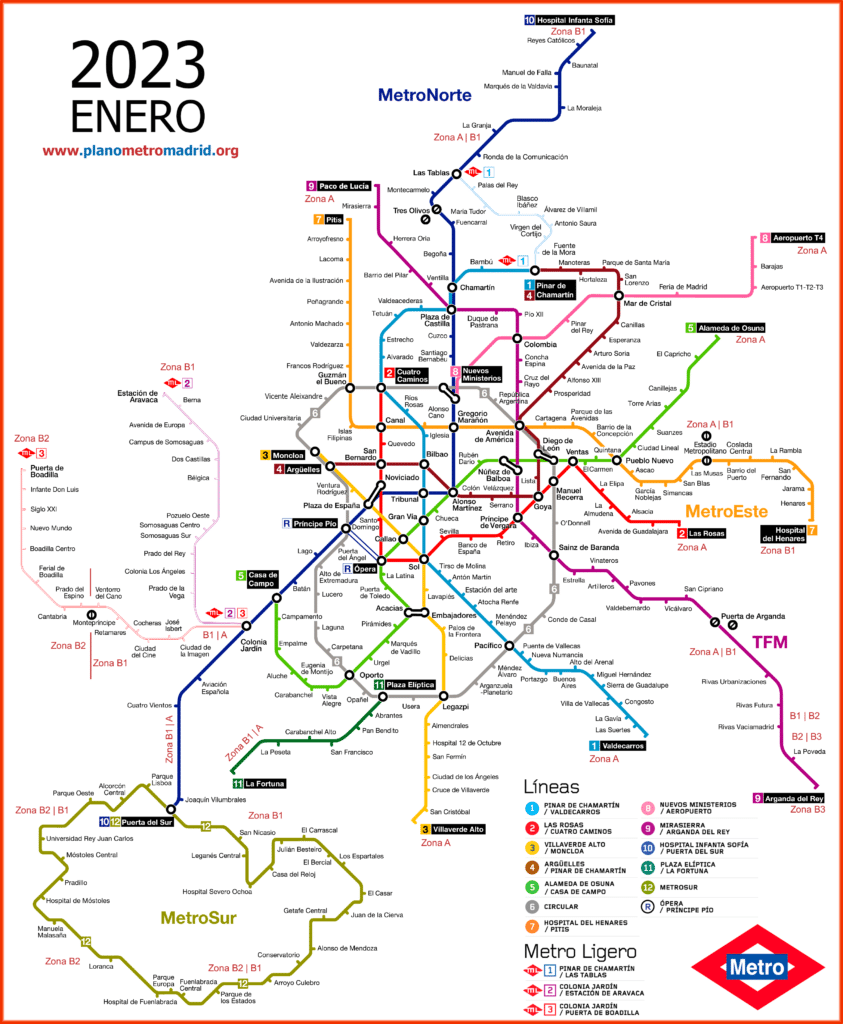
Click on the image and download the map of Madrid´s underground system for 2023
Visitors to the city of Madrid can get an in-depth look at the Madrid Metro’s present system by downloading the free PDF version of the Madrid Metro 2023 Map, which is available for download here. This dynamic map provides extensive information on each station, such as line numbers, information on routes, and transfer possibilities. In addition to this, it highlights other sites of interest, such as monuments and attractions, to assist tourists in navigating the city with more ease. In addition to this, the map provides useful links to other modes of transportation, such as the bus lines and taxi services that are available. When traveling to Madrid, it is a good idea to bring along a map of the Madrid Metro 2023 system because of the detailed information it contains and the intuitive layout it features.
Public transport tickets in Madrid – Best types for travelers & actual prices
Madrid is a bustling city that is home to a wide variety of sights and activities. Because there are so many different modes of public transit, simply navigating the city itself may feel like an exciting new experience. When it comes to tickets for public transit in Madrid, there is a wide variety of alternatives available, ranging from single tickets to passes valid for many days.
The single ticket, which may be used on the metro, bus, and tram, is the most typical and widely used type of ticket. You can purchase these tickets at any metro station, as well as through approved stores and vending machines elsewhere in the system. Prices range from $1.50 to $2, with no consistent pattern between zones. You also have the option of purchasing multi-trip tickets, which allow you to take 10 trips but only cost you the price of 8.
There are a number of different multi-day travel permits available for individuals who intend to remain in the Madrid area for an extended period of time. With the Madrid Tourist Travel Pass, you can ride the metro, buses, and trams as much as you want for 1, 2, 3, 5, or 7 consecutive days. A one-day pass costs €8.40, while a seven-day pass costs €35. The prices fluctuate from those two extremes. The Madrid Card is another excellent option for tourists, since it provides discounts to a variety of attractions in the city in addition to free rides on the public transit system for a period of three days.
The Madrid Tourist Travel Pass is the most advantageous purchase for travelers who will be in Madrid for a period of three days. You won’t have to worry about the expense of each individual journey because you’ll have access to the metro, tram, and bus systems on an endless basis. This will make getting around the city really convenient. In addition, the pass may be purchased at a reasonable price of 20 Euros, making it a cost-effective option for touring Madrid.
Summary of fares for public transport in Madrid
- Single tickets are the most prevalent and may be purchased for between $1.50 and $2
- Multi-trip tickets can be purchased for 10 trips at the price of 8 trips.
- The Madrid Tourist Travel Pass offers the best value for tourists staying in the city for three days, is extremely handy, and costs only €20.
Timetables & Schedules of Madrid Metro system
The weekday hours of operation for the Madrid Metro are from 6:00 am until 1:30 am, and the weekend and holiday hours are 24 hours long. During rush hours, trains depart around every two to five minutes, while during off-peak hours, they depart approximately every five to fifteen minutes. There is a time-of-day-dependent variation in the frequency of trains running on each line, with the busiest lines often running trains every two minutes on average. Line 6 is a circular line that connects all of the other lines in the metro system. There are a total of twelve different lines that make up the metro system. Each line has its own color-coded path, and its end stations are located at their own distinct locations. In addition, the Madrid Metro system is connected to a large number of bus and tram lines, which can be utilized in order to transfer between lines or to travel to many other areas of the city.
What Are Other Options For Public Transportation In Madrid?
The metro is frequently the most convenient method of public transit, both for people who live in Madrid and those who are just visiting the city. However, there are a number of different modes of transportation in Madrid that can be utilized, and it is a good idea to investigate these. It is not necessary to rely on the metro to go around the city because there are many other modes of transportation, such as buses, trams, motorcycles, and boats.
Buses in Madrid
Because it is so broad, the bus network in Madrid can convey passengers to virtually every location within the city. There are around 500 lines that span the entirety of the city, and several of them operate during the night. Buses are a convenient mode of transportation for getting about Madrid’s downtown area as well as the city’s outskirts. You can buy tickets at any metro station or kiosk throughout the system.
Trams in Madrid
The tram system in Madrid is comprised of two lines that travel across the downtown area as well as the outskirts. The lines connect the central business district of Madrid to the northern part of the city as well as the outskirts of the city. Tickets for the tram can be purchased at any metro station or kiosk throughout the system.
Taxi
Taxis are a common choice for vacationers who want to get around quickly and are looking for transportation options. Taxis can be called for on the street or reserved in advance through mobile apps. It is essential to be aware that taxi fares in Madrid are slightly higher than those in other cities; hence, if you are aware that you will want a ride, it is best to make reservations in advance with an app like Uber or Cabify.
Bikes
Because it has such a large network of bike paths and lanes, Madrid is a fantastic destination for anyone who enjoys riding bicycles. Renting a bicycle for the day or even just a few hours is possible through a number of different bike-sharing programs, one of which is called BiciMAD. Discovering the city and all of its lovely parks on two wheels is a fun and convenient option.
Boats
There are a number of different boat services that can be utilized to get around Madrid, which is convenient given that the Manzanares River flows right through the middle of the city. The boats provide a wonderful opportunity to take in the sights of the city, and they also make multiple stops at various locations along the route. At the docks, you’ll be able to buy your tickets.
The network of public transportation in Madrid is extensive and varied, and users have a wide variety of alternatives at their disposal for navigating the city. There are numerous alternatives to relying solely on the metro in order to appreciate the city, like using buses, trams, boats, bicycles, and the metro itself.
How To Get From Adolfo Suárez Madrid–Barajas Airport (mad) To The City Center With Public Transport?
Adolfo Suárez There are around sixty million people who travel through Madrid–Barajas Airport each year, making it one of the busiest airports in all of Europe. Because it is likely that you will be arriving at this airport during your trip to Madrid, it is essential that you are familiar with the many transportation options available to get you from the airport to the heart of the city. Because Madrid has such high-quality public transportation options, getting from the airport to the city center in a timely and cost-effective manner is not difficult at all.
The Metro is the most convenient mode of transportation for getting from Adolfo Suárez Madrid–Barajas Airport to the heart of the city. The airport’s Terminal 4 can be found right close to the Metro station that serves the airport. There are two Metro lines that can take you to the heart of the city: line 8 and line 10. You can use either one of these lines. To get to Plaza de Espaa in the south of Madrid, use line 10, while line 8 will take you to Nuevos Ministerios in the north of Madrid. It takes roughly 20 minutes for passengers on both routes to reach the city center.
If you would prefer to take a bus, there are multiple buses that depart from the airport and make their way to the central business district of the city. The Express bus, which will take you to the Atocha Renfe train station in the middle of Madrid, is by far the most common and well-liked option. Every twenty minutes, the Express bus may be seen waiting for passengers just outside the Terminal 4 arrivals hall. The journey to Atocha Renfe takes approximately forty minutes.
Taking a taxi from the airport to the heart of the city is yet another choice you have. At the airport, there is no shortage of taxis, and most of them are open for business around the clock. The fare to the heart of the city is typically close to 20 euros.
It is not very difficult to get from Adolfo Suárez Madrid–Barajas Airport to the core of the city, regardless of which mode of transportation you select. You may easily and quickly reach the city’s heart by taking public transportation, such as the subway, bus, or cab.
What kind of sightseeing do you have to see if you visit Madrid for the first time?
Tourists who are eager to explore a city that is both active and fascinating will find that Madrid is an excellent location. The sheer quantity of attractions that Madrid has to offer can often leave tourists feeling overwhelmed because there is so much to see and do in the city. Here is a list of the most popular tourist destinations in Madrid to assist you in making your decision.
- There is a solid reason why the Prado Museum is considered to be one of the city’s most popular tourist destinations. The museum, which is situated in the middle of the city, is home to some of the most significant works of art in the world. These include modern works as well as masterpieces by artists such as El Greco and Goya. In addition to that, it houses a significant number of sculptures, tapestries, and other examples of decorative arts.
- The Royal Palace of Madrid is yet another landmark in Madrid that you absolutely must miss. The palace, which was constructed in the 18th century, is a remarkable illustration of Spanish Baroque architecture. In the inside, guests get the opportunity to explore a number of magnificent hallways and stairs, in addition to a stunning collection of art and furniture.
- Visit the Plaza Mayor to get a feel for the lively culture that the city has to offer. This area, which serves as the city’s epicenter, plays host to a wide range of activities, including concerts, festivals, and markets. Visitors have the opportunity to explore the numerous stores and cafes during the day, while the area is packed with people in the evening who come to take advantage of the lively environment.
- The Retiro Park is an excellent choice for those who would want to spend some time in the great outdoors. This wide park can be found to the east of the city center, and it provides tourists with lots of green space in which they may rest and enjoy the day. It is also home to a number of monuments and statues, giving it the ideal location for taking a wander around at your own pace.
- Last but not least, a vacation to Madrid is not truly worthwhile until it includes a stop at the legendary El Rastro. Every Sunday, at this busy flea market, which is full with strange and interesting products, there is something for everyone. At El Rastro, you’ll find everything from antiques and clothing to jewelry and literature, so there’s something for everyone.
Madrid is a fantastic place to visit thanks to its many famous landmarks and attractions. The city has plenty to offer everyone, whether they are interested in art and culture, nature, or shopping. Consequently, if you want to get the most out of your trip to Madrid, you should prioritize seeing these sights and include them in your schedule.
Summary of our tour guide for Madrid
Madrid, the capital city of Spain, is a thriving metropolis that is brimming with life, culture, and entertainment options. It is the location of a number of the country’s most well-known landmarks and tourist attractions, such as the Royal Palace and the Prado Museum, among many others. Moving around Madrid is a breeze and very convenient thanks to the city’s extensive network of public transit alternatives. The Madrid Metro is by far the most common mode of transportation due to its large network of underground lines, which makes it feasible to get nearly anywhere within the city. There are also other modes of transportation, like as buses, trams, and taxis, in addition to the suburban train, which links Madrid to the municipalities that are located around it. It is not difficult to go around Madrid and enjoy all of the city’s attractions thanks to its extensive network of public transportation options. Madrid is a fascinating city to discover.
Top 5 FAQs and answers about Madrid public transport?
Can you tell me about the many modes of public transportation in Madrid?
- The Metro, buses, and cercanas (sometimes known simply as regional trains) are the most common forms of public transportation in Madrid. Trams and taxis are two examples of alternative modes of transportation, despite the fact that they are not as popular. More than 200 stations make up Madrid’s huge bike-sharing network, which is another amenity that the city offers.
How do I go about purchasing tickets?
- Tickets for the Metro, buses, and cercanas can be purchased at any station that specializes in either the sale or distribution of those modes of public transportation. You can also purchase tickets through the official website or mobile app. It is essential that you keep in mind that you have to get your tickets validated before you can use them.
When are the hours that the public transportation is available?
- On weekdays, the Metro is operational from 6 am to 1:30 am; on weekends and holidays, it operates continuously from 6 am to 2 am. Between the hours of around 5 am and 11 pm, cercanas and buses are in service.
How much does it cost to buy a ticket?
- The specific price of a ticket can vary, although the most typical tickets can be purchased for a single journey for 1.50 Euro. You also have the option to purchase multi-journey tickets, which come with a discount.
Do you have any suggestions for using the public transportation system in Madrid?
- Make sure that you have validated your ticket before you fly, as this is the single most critical piece of advice. To accomplish this, you will need to insert it into one of the validation devices that are located at the station. Because there are so many people checking tickets, it is imperative that you remember that you must have a ticket in order to travel. When traveling, especially at night, it is imperative that you do not let your guard down and remain aware of your surroundings at all times.
Useful links

